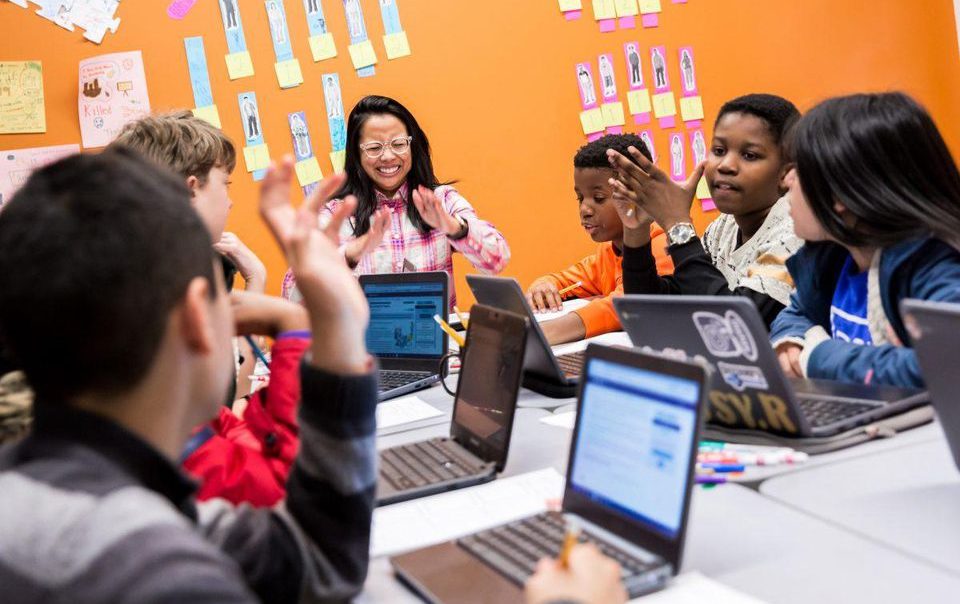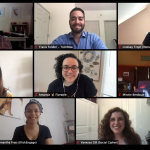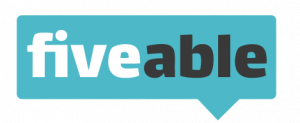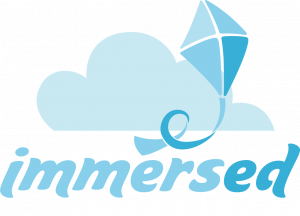
Articles
Editor’s Picks
Education Technology
The AT&T Aspire Accelerator Class of 2020 Is Developing EdTech Amidst a Pandemic
By Henry Kronk
June 23, 2020
On May 20, the sixth annual edtech-focused AT&T Aspire Accelerator kicked off with a class of eight edtech startups. These companies and organizations will work until December to develop their products and services, receive mentorship, and take advantage of AT&T resources. In addition, each will receive $100,000 in seed funding and up to $25,000 to cover the costs of the program. While every accelerator class is different, the 6th Aspire group is facing a challenge that has never presented itself to the sector before.
The accelerator is part of AT&T’s broader social impact program, Aspire. Since it launched in 2008, it has put forward over $550 million to aid education initiatives.
The AT&T Aspire Accelerator Is Now in Its Sixth Year
AT&T Director of Social Innovation Anne Wintroub was among the team that developed the Aspire Accelerator back in 2015 and currently leads the program.
“Education has long been the core focus of AT&T’s impact work,” Wintroub said. “As a modern media company leading in technology, media and telecom, we recognize that skills gaps are not unique to one industry or one area of expertise. Advances in technology not only require a focus on “hard” skills such as coding and data analytics, but also emphasize the importance of the “soft” skills that technology cannot replace, including leadership, collaboration and effective decision-making. Our Accelerator’s focus on building skills enables us to invest in the most promising ventures and entrepreneurs out there. They’re shaping the future for students, and also for our company.”

“We’re also very proud to support the growth of small businesses, and empower diverse entrepreneurs,” Wintroub continued. “Nearly 75% of our Accelerator companies are led by women, and more than half by people of color. Our entrepreneurs know the communities that they’re developing tools for. We believe that’s key to their success.”
The eight members of the Aspire Accelerator are: Fiveable, Almost Fun, TechRow, KlickEngage, Social Cipher, GiveThx, Purpose Project, and Immersed Games. We asked each of them the same three questions to learn more about their work and outlook on the edtech sector. Two startups – Social Cipher and KlickEngage – did not get back to us.
AP exams are scored on a five point system (of one through five). Fiveable wants to set students up to get that five. Besides AP exams, the company also supports college admissions, and social emotional skill development. They conduct this work through community events, online resources, and livestreamed discussions.
What is your origin story? How did you launch? And why?
Fiveable Founder and CEO Amanda DoAmaral: I was a high school teacher in Oakland from 2012-2017. I taught mostly 10th grade AP World and worked to improve enrollment and outcomes in that course. About 6 months after I left my school, I started getting a few emails from former students. “Ms. D, we’re all gonna fail. Please help us.” They were now in 11th grade AP US History and struggling to keep up, so I just started planning live streams for them.
That quickly evolved as I shared the links to our streams across different networks. In the first few months of Fiveable, I taught 2,500 students in two subjects. Two years later, we’ve taught over 1M students in fifteen subjects.
What are you hoping to gain from your experience with the AT&T Aspire Accelerator?
DoAmaral: I’m excited to work with the AT&T Aspire team to grow as an entrepreneur and to better understand the edtech industry. As a teacher, I had very little interaction with school administration or district level decisions when it came to the technologies we used. I’m looking forward to understanding these spaces better and making connections that will help Fiveable reach more students.
There are some today who believe that investments made in education technology are misspent. In an opinion piece published last September, the Bloomberg editorial board argued that “Classroom technology doesn’t make the grade.” They write, “Advances in educational software, particularly applications that aim to “personalize” learning, have the potential to help students, support teachers and make academics more engaging. But a good deal of the technology pouring into schools remains unproven, untested and — due to inadequate teacher training — poorly applied. To avoid squandering further time and tax dollars, policy makers should limit spending on new technologies until more schools demonstrate they’re able to use them effectively.” With your own edtech products or services in mind, do you agree with the Bloomberg editors? Why or why not?
DoAmaral: In the aftermath of the COVID outbreak, it’s definitely clear that schools and districts were ill prepared to move to remote learning. And a big part of that was due to slow adoption of technologies and inadequate teacher training. But the solution to that is not to pull edtech from them.
Instead, there needs to be more intentional investment from the bottom up. Students and teachers should have a say in what technologies are adopted since they understand learning needs better than anyone. Administrators need to train staff to better integrate those tools every day, especially if we are still under threat of COVID. And all of this requires district-level investment.
By combining virtual reality with digital resources and their own content library, TechRow seeks to deliver a more engaging learning experience via a single platform.
What is your origin story? How did you launch? And why?
TechRow Founder and CEO Travis Feldler: TechRow was founded in Harlem, New York out of a need to boost engagement through virtual reality technology in under-served schools. I started the company after building a workforce development strategy for the Harlem Community Development Corporation, the New York Governor’s Economic Development Arm for Northern Manhattan. The initiative focused on skilling up teenagers through technology skills, particularly youth ex-offenders to reduce reincarceration.
I discovered that achievement gaps form as early as 4th grade. These gaps make it extremely difficult for students to get back on track, placing largely Black and Latino students from low income communities in a sort of academic arrest. Disengagement increases from elementary to high school. This helps explain why over 2 million students drop out every year. According to a Samsung survey, 85% of teachers believe that VR can improve student outcomes, however only 2% of teachers are actually using it in school. We wanted to capitalize on the engagement data and increase adoption through a simple and intuitive platform. Through our media partnerships with companies like the New York Times, Tribeca Enterprises, CNN, BaoBab Studios and more, we managed to build a platform that makes VR usable in the classroom. We launched with 15 students in a classroom and have grown by over 800 students a day within a year across New York City public schools.
What are you hoping to gain from your experience with the AT&T Aspire Accelerator?
Feldler: The AT&T Aspire Accelerator creates a bridge between communities, social impact, and company growth which are rare in today’s funding landscape. We are hoping to strengthen our market strategy and capitalize on AT&T’s enormous resources to make learning more engaging for students through immersive technology.
Do you agree with Bloomberg’s editors? Does edtech “make the grade?” Why or why not?
Feldler: I agree with the Bloomberg editors on the points that they raised, but I would take it a step further. The industry continues to build products that are out of touch with the needs of classrooms which widens the gaps between technology and adoption. At times, I look at some solutions in the VR education space and I scratch my head wondering how that will work in a school with economic, knowledge, connectivity and learning challenges. In order to fully reap the benefits of VR in learning, the solution must be simple, intuitive and democratized, not locked into complex interfaces. It can’t involve content that doesn’t incorporate diversity and inclusion, or that places a strain on already stressful learning environments. Technology should alleviate, not add stress.
The non-profit GiveThx is based on a simple idea: encouraging students to thank each other improves academic outcomes. Using digital thank you notes and other online resources, GiveThx seeks to boost student performance along with social-emotional skills.
What is your origin story? How did you launch? And why?
[Co-Founder and CEO] Mike Fauteux made a remarkable discovery a few years ago while teaching math: a simple act of students saying “thank you” to each other accelerated their academic progress and social-emotional development. Mike’s students started 9th grade math with 2nd-7th grade skills and came from a high-trauma community in Hayward, California. In addition to teaching math, he created opportunities for students to build their self-esteem and strengthen peer and adult relationships so they could succeed in class and in school.
While Mike’s innovation was unique, the stress and well-being challenges his students faced were not. 70% of teens report anxiety, stress, and depression as serious problems. Teaming up with friends Amara and Javier, GiveThx was launched to address teen anxiety, stress, and belonging using gratitude science.
Dedicated to creating education technology based on research and focused on impact, the GiveThx team took an intentional first step: validate that the impact Mike experienced with his students was replicable beyond his classroom. Through a research study, secondary school students in low SES urban schools using GiveThx’s program for 5 minute per day for 6 weeks showed: significant increases in life and relationship satisfaction and significant decreases in anxiety, negativity, depression, and stress.
A little thanks can have a big impact.
What are you hoping to gain from your experience with the AT&T Aspire Accelerator?
GiveThx is excited about gaining a professional learning community of like-minded founders and expert coaches to grow with. We hope to refine our program, operations, and strategy to increase our impact and sustainability. AT&T’s technical and financial support are game-changers for our nonprofit at our current stage.
Do you agree with Bloomberg’s editors? Does edtech “make the grade?” Why or why not?
We agree that money is wasted in a number of ways throughout education technology spending. Only 67% of paid licenses get used. This doesn’t, however, make education technology bad or demand a limit to spending. Rather, it requires policy makers, schools, and providers to spend differently.
If we’ve learned anything from the current moment, it is that schools need to embrace technology to better meet the needs of its students and communities. But to do this, there need to be better processes for vetting edtech programs, stronger implementation monitoring, and more time and resources for staff to learn how to use them effectively. Any initiative without sustained professional learning is unlikely to succeed. This is something policy makers can directly impact with their influence over how time and money are spent.
As edtech providers, we also need to hold ourselves accountable, do a better job of supporting users, and doing our own efficacy work. Companies continue to get renewals even with only 33% of license usage at schools. This incentivizes turning a blind eye to improving implementation, focusing instead on increasing customer volume. We also need to move away from sharing self-funded whitepapers as if they are research and move towards improving our own efficacy work, how we communicate it, and how we support schools to measure plainly their return on investment. Schools and policy makers can demand these changes from providers and companies can make these changes to strengthen their competitive position. Together, these changes will improve the edtech ecosystem and give new programs a chance to grow.
Immersed Games uses an online collaborative gaming environment to help students build science literacy skills.
What is your origin story? How did you launch? And why?
Immersed Games Founder and CEO Lindsey Tropf: I first had the idea while playing World of Warcraft and realizing how much I learned, and became fascinated with educational games.
Later, I was working on a PhD in education and kept realizing what a powerful learning tool that games could be as they linked to most facets of ideal learning approaches. If you think about an online game like World of Warcraft, it’s actually groups of people engaging in active, collaborative problem solving together. They build a community of practice. The entire game community gets better over time. It’s inspiring!
So I began digging in to what games I could study, as an educator, but realized that no one out there was really delivering on the full potential of what learning games could be — of this mental model I accidentally put together. So I began recruiting co-founders, talking to people, and building!
What are you hoping to gain from your experience with the AT&T Aspire Accelerator?
Tropf: The Aspire team is extremely knowledgeable in supporting us in bringing our product to market and supporting educators as they implement. Additionally, AT&T provides funding, design services, and we’ve even connected with the New York State Director of Public Relations to help spread the word on earned media. We’re excited to have AT&T’s help in hitting our next milestones as we bring our product into many more schools and students’ hands this year.
Do you agree with Bloomberg’s editors? Does Edtech “make the grade?” Why or why not?
I would have to agree that many products are untested and poorly applied with inadequate teacher training. There are three main issues that really come out of this for me, as a creator of an educational video game myself.
First is the need for people to make edtech products that have a pedagogical basis. Second is that the use of technology should actually solve problems for teachers. Third, teachers do need more training and support.
Of course when it comes to funding, I don’t think now is the time to pull back on educational technology. Given the needs for remote learning caused by COVID, this would be the absolute worst time. Instead, we need to get smarter about implementation and make sure we, as educators, are implementing in effective ways. Don’t focus on the dazzle of a new product, but on what it can actually help you accomplish with your learners.
With remote learning, we also have the opportunity to rethink professional development. Normally, districts have to get substitutes to cover a class while a teacher attends a training session which means there’s a motivation to front load information for practical reasons. With more flexible remote learning, we see this as an opportunity to improve and are pitching a full-year training and support process with a model blended with shorter live sessions and then in-class tasks and supports. This should enable us to be more effective and follow more best practices in more of a coaching model as we support implementation!
The Purpose Project, a non-profit organization, curates an online curriculum and learning platform to equip learners with 21st century skills.
What is your origin story? How did you launch? And why?
Co-Founder and Executive Director Minnie Bredouw: The Purpose Project was inspired by a pattern we noticed in the world of education four years ago. After working with teens and young adults, we realized that many of them were chasing a future vision for themselves that was entirely set for them by the adults in their lives. Historically, the education system pushes a traditional narrative of success—high school graduation and college without really taking into account the skills, interests, and talents of each individual student. And moreover, it pushes a future that could be irrelevant given the fast-paced nature of change in today’s current world and economic climate.
This was emphasized with a conversation our founder had with Karen, a 20-year-old young woman living in the Bronx with her mom and sister. Karen had recently dropped out of college, and when we asked her if she planned on returning, she said, “I do want to go back, but I don’t want to waste money until I know what I’m going for.” In the increasingly competitive environment of academia, teenagers feel a mounting pressure to achieve, make the grades, get the test scores, fill the resumé, and graduate college as a pinnacle of success. But why? Without agency, is all of this achieving at risk of feeling meaningless if it doesn’t translate it into a pursuit or career they actually care about?
The Purpose Project was launched out of a partnership between IDEO and Plussed.org, and was designed hand-in-hand with over 150 students. Purpose Project’s mission is to change the way educational curriculum is delivered and experienced by young people—making them feel more confident in their unique point of view, and the impact they have on the world around them.
What are you hoping to gain from your experience with the AT&T Aspire Accelerator?
Over the past three years we’ve served our students well with our blended experiences which paired a classroom-based curriculum led by a facilitator with an online platform for students. With our partnership with AT&T Accelerator, we want to make our experience more equitable and available to all. We are launching a new, highly interactive product that will allow individual learners to access our programming on their own. AT&T’s support will allow us to fully develop a business model that is rooted in our vision and values of equity, with scalable access to a digital tool. This includes support towards allowing our product to move towards a fully mobile experience, leveraging their expertise in mobile and 5G networks.
Do you agree with Bloomberg’s editors? Does Edtech “make the grade?” Why or why not?
We agree with Bloomberg that classroom-based technology doesn’t make the grade, but we don’t support the notion that it’s due to inadequate teacher training and poor application. We can’t continue to blame teachers and expect them to solve everything a student brings with them into a classroom with quick fixes or infinitesimal support. The fundamental reason why the Purpose Project exists is to empower students to be able to advocate for their needs and to pursue their interests, academically, personally, and professionally. We are helping young people develop voice and agency. We want to enable them to create a vision for their future they are excited about.
Almost Fun, a non-profit, delivers SAT test prep resources, but with a twist. It changes up questions to be culturally relevant to the learners who are answering them.
What is your origin story? How did you launch? And why?
Our founder, Lisa Wang, formerly worked at Google as a product manager in the education space. Through her time working with schools and teachers, she found that while the technology gap at low-income schools remains high, a bigger problem that students and teachers experienced was in content engagement. As a volunteer test prep instructor, she also saw the problem first-hand, as her students struggled to engage with test prep content that rarely reflected the world they were experiencing. She started writing her own content based on the movies, music, and pop culture that her students would talk about. Instead of falling asleep on their desks, students were suddenly actively discussing concepts in class. This content became the first version of our content library that was released through a website and mobile app for any student to access. One day in class, a student mentioned that these practice questions made studying “almost fun,” and our organization’s name was settled.
What are you hoping to gain from your experience with the AT&T Aspire Accelerator?
We’re hoping to leverage the immense experience the AT&T Aspire team has in the education space to grow and expand our organization and the students we’re able to reach. In particular, we’ve seen so many organizations come out of this accelerator with strengthened products and strategy, and we’re excited to have this community and mentorship as we work to serve more students.
Do you agree with Bloomberg’s editors? Does Edtech “make the grade?” Why or why not?
Personalization in the education space has largely been through personalizing the pace of education. But, ironically, having an algorithm dictate the pace a student is learning at removes all the truly personal aspects of learning. The entire process of working with a student to develop understanding and learning how their personal experiences affect their understanding is replaced by a generic algorithm that is often untested in an equitable way.
If technology is being used to effectively replace in-person instruction, we believe organizations must be held to a higher standard of testing and validation with a testing sample that accurately represents the demographics of our student population today. In addition, we believe that personalizing pace is not enough – rather for many low-income students and students of color, the problem is that the curriculum and content itself is not personal enough and does not reflect the backgrounds and experiences of a diverse student population. We believe a better model overall is a mixed learning model, where instructors are not replaced, but empowered in their instruction with technology-enabled resources that can effectively engage and support their students.
Media courtesy of AT&T and the members of the 2020 Aspire Accelerator.















No Comments